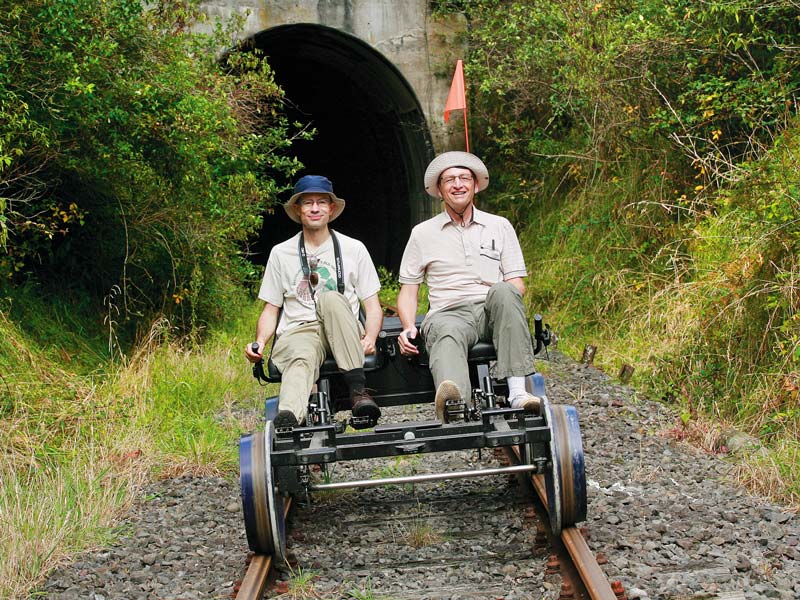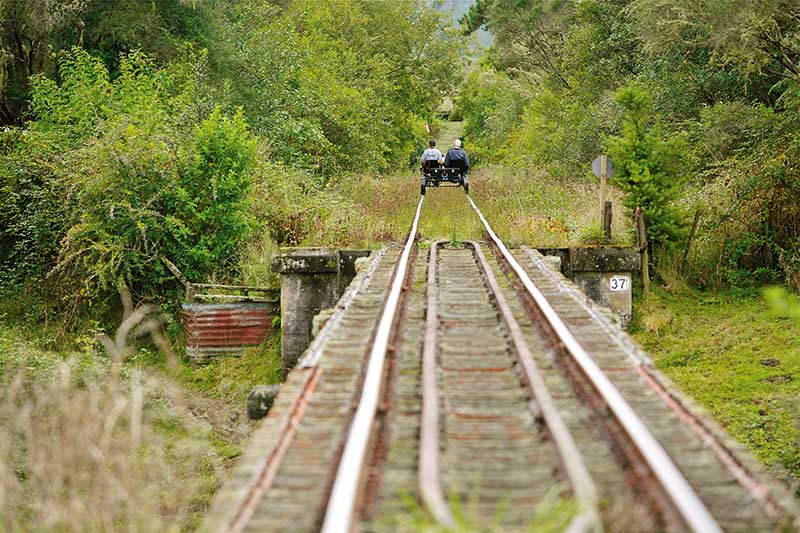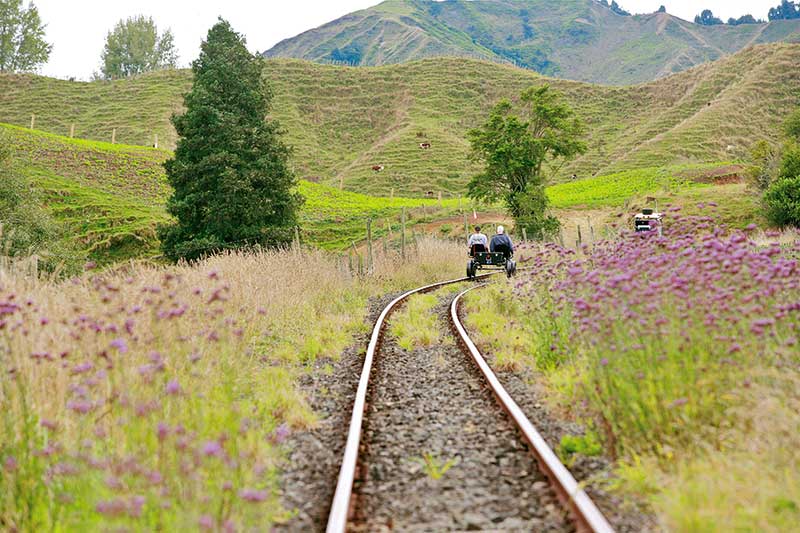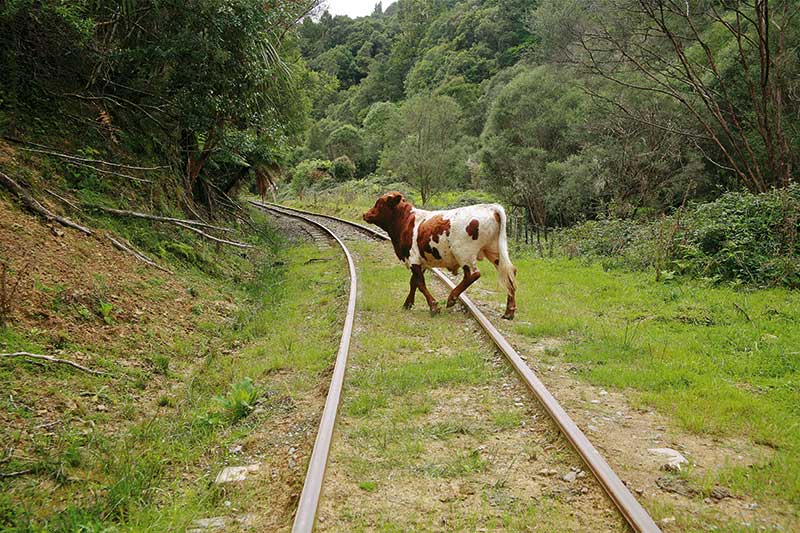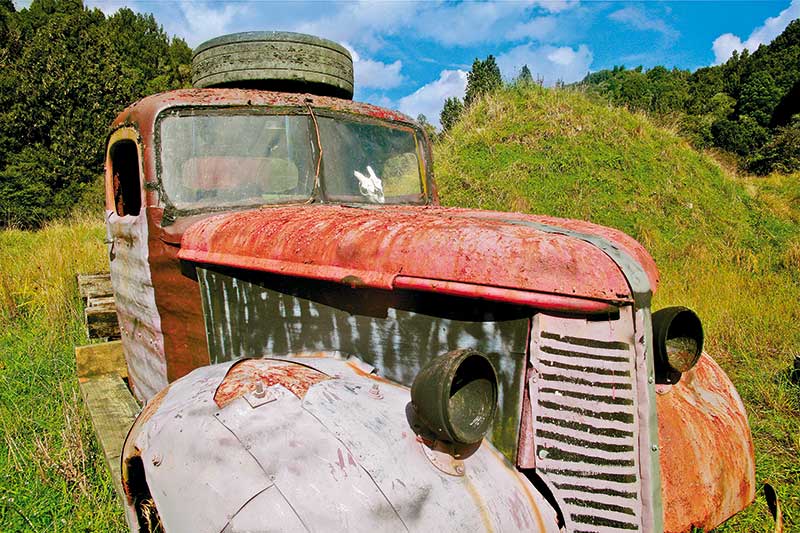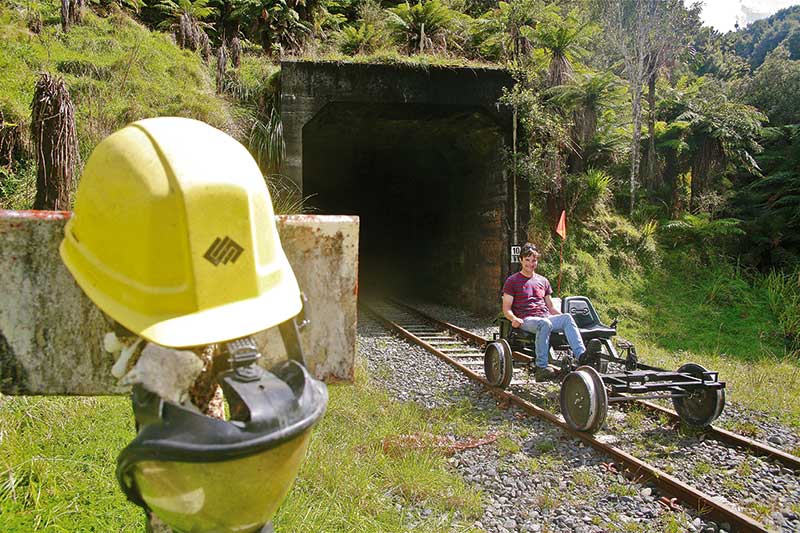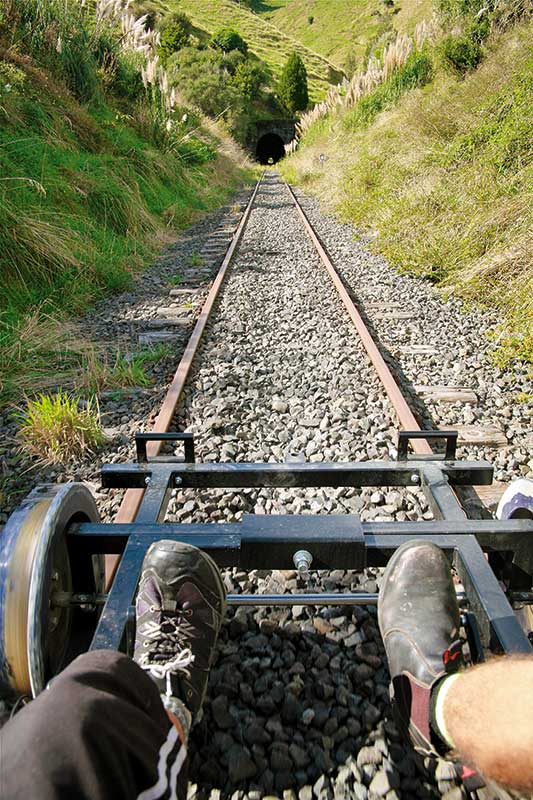Forgotten World Adventures has added a new twist to its hugely popular rail cart tourism experience.
Instead of traveling along the decommissioned railway lines of the SOL in a motorised rail cart, you can now get back to basics on the new rail bikes.
Read: self-propulsion using your feet and bicycle pedals.
Forgotten World Adventures
I was a little apprehensive on the drive to Whangamomona. The thought of just sitting back and enjoying the scenery in a rail cart seemed more sensible than relying on a pair of unfit legs but I was accompanied by a friend who was fit. In these situations, it is always wise to have a back-up plan.
We arrived in Whangamomona on a very quiet Good Friday. The pub was shut and the street was empty with not a soul in sight. It was a different story down at the Forgotten World Adventures departure ‘lounge’ situated where the railway station and yards used to be.
Ten rail carts were parked up with upwards of 20 people settling in for their adventure. One by one they departed, leaving the line clear for our rail bikes, three in total.
The best way I can compare the rail bikes with the rail carts is that one is like a moped scooter, the other like a skateboard. You choose according to your stamina and energy levels.
They were deceptively light to move by hand compared to their size. Two very comfortable seats were perched up high in the centre of the bike with a large toolbox mounted at the rear to carry packs and assorted personal items.
After a quick safety brief, we were off following our guide, Weston, who was leading us in the comfort of a motorised rail cart. I must admit, a couple of times I almost joined him but this was an interactive experience and a challenge I was determined to see through to the end.
There is a knack to pedalling a rail bike by two people. It’s about selecting the right gear to match the rate of climb and to synchronise the pedalling so that you are both in unison rather than fighting against each other. It took a while but once we got our rhythm right and matched gears, it was relatively easy.
Too low a gear and we got puffed pedalling too fast; too high a gear and we strained under the tension. Middle gear was generally perfect and gave us time to admire the scenery.
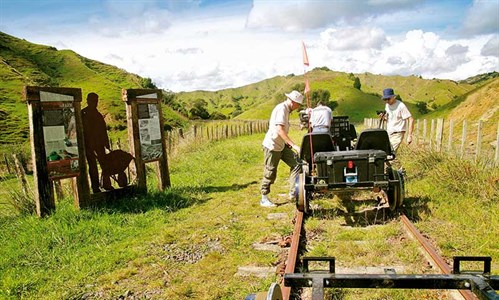
Sweat and scenery
From Whangamomona to Tahora, the scenery is spectacular, especially on a calm sunny autumn day.
It is also uphill.
How relieved I was when we caught up with the other rail bikes at the foot of the Tahora Saddle. It was good to finally bond with our fellow rail bikers over coffee and speak to each other on a first name basis.
Suitably fortified, we then made our assault on the Tahora Saddle to the twin tunnels at the top where we stopped for a very interesting lesson on the building of the SOL railway.
Between the tunnels there is a deep gully yet the railway tracks are elevated on an embankment between. To achieve this, a timber trestle was built between the tunnel portals and during boring of the tunnels, the excavated soil was dumped onto the trestle until it was covered. The tracks were then laid on top.
An information board at Haeo, where there is a similar embankment, outlines the feat in detail with black and white photographs taken during construction.
From here the most exciting segment of the whole trip began. From inside the second tunnel on the saddle, our rail bike took off with a mind of its own. It was the start of a thrilling downhill rollercoaster ride all the way to what is left of Tahora village.
It was exceptional and made the uphill battle from Whangamomona so worth the effort.
The next section of the railway from Tahora to Tangarakau is, in my opinion, the most scenic. Here you get a real sense of the decline and abandonment of the railway infrastructure and the villages along the way.
A little further along the line is the most photographed rustic cottage on the Forgotten World Highway and the SOL Railway. Still standing 60 years after the last resident moved out, it epitomises the slow decay of the area.
From here, the railway and highway part company with the railway running through the most isolated and rugged landscape in the area before again joining up with the highway near Tokirima. The number of tunnels and bridges built in the short distance from Tahora to Tokirima is testament to the skill and determination of the railway builders from a century ago.
After two short tunnels and a rusty moss-covered viaduct, we arrived in Tangarakau for our lunch break and a well-earned rest.
The gorge has a very definite Jurassic feel to it, the only signs of human activity were the art installations dotted along the route. An old rusty truck with a goat skull in the driver’s seat was my favourite.
We left the native bush of the gorge at tunnel number 10 emerging a few minutes later into open farmland – the transition was instantaneous.
From here it was a gentle glide to our afternoon tea break at Haeo to view the final spike driven to complete the railway. It is on display near the mounted art installation of a red Morris Minor car.
Finally, we pedalled the last few kilometres to our destination at Tokirima and joined the shuttle back to Whangamomona.
Never miss an issue of Motorhomes Caravans & Destinations magazine. Subscribe here.

